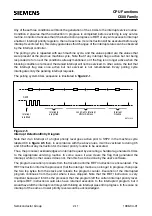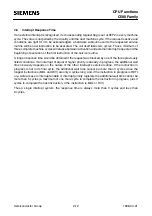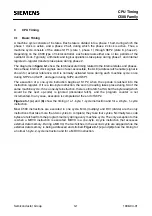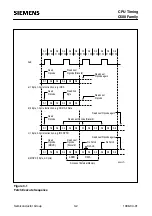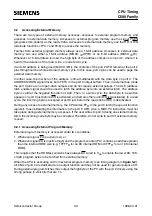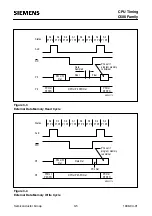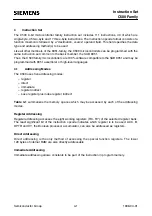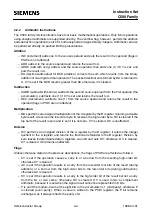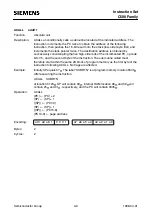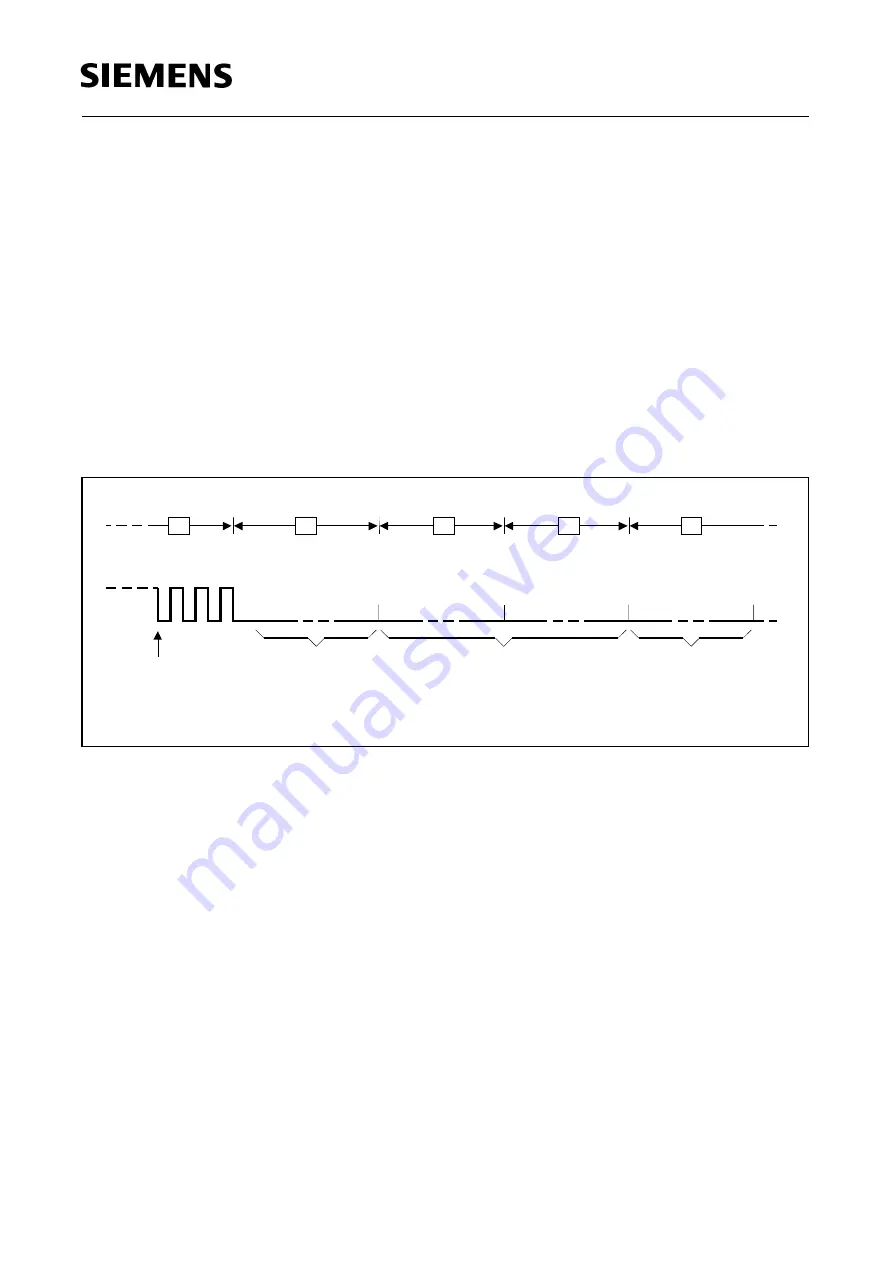
CPU Functions
C500 Family
Semiconductor Group
2-11
1998-04-01
Any of these three conditions will block the generation of the LCALL to the interrupt service routine.
Condition 2 ensures that the instruction in progress is completed before vectoring to any service
routine. Condition 3 ensures that if the instruction in progress is RETI or any write access to interrupt
enable or interrupt priority registers, then at least one more instruction will be executed before any
interrupt is vectored too; this delay guarantees that changes of the interrupt status can be observed
by the interrupt controller.
The polling cycle is repeated with each machine cycle, and the values polled are the values that
were present at the previous machine cycle. Note that if any interrupt flag is active but not being
responded to for one of the conditions already mentioned, or if the flag is no longer active when the
blocking condition is removed, the denied interrupt will not be serviced. In other words, the fact that
the interrupt flag was once active but not serviced is not remembered. Every polling cycle
interrogates only the pending interrupt requests.
The polling cycle/LCALL sequence is illustrated in
.
Figure 2-5
Interrupt Detection/Entry Diagram
Note that if an interrupt of a higher priority level goes active prior to S5P2 in the machine cycle
labeled C3 in
then, in accordance with the above rules, it will be vectored to during C5
and C6 without any instruction for the lower priority routine to be executed.
Thus, the processor acknowledges an interrupt request by executing a hardware-generated LCALL
to the appropriate servicing routine. In some cases it also clears the flag that generated the
interrupt, while in other cases it does not; then this has to be done by the user's software.
The program execution proceeds from that location until the RETI instruction is encountered. The
RETI instruction informs the processor that the interrupt routine is no longer in progress, then pops
the two top bytes from the stack and reloads the program counter. Execution of the interrupted
program continues from the point where it was stopped. Note that the RETI instruction is very
important because it informs the processor that the program left the current interrupt priority level.
A simple RET instruction would also have returned execution to the interrupted program, but it
would have left the interrupt control system thinking an interrupt was still in progress. In this case no
interrupt of the same or lower priority level would be acknowledged.
MCT01859
S5P2
Interrupt
is latched
Interrupts
are polled
Vector Address
Long Call to Interrupt
Routine
Interrupt
C2
C1
C3
C4
C5















